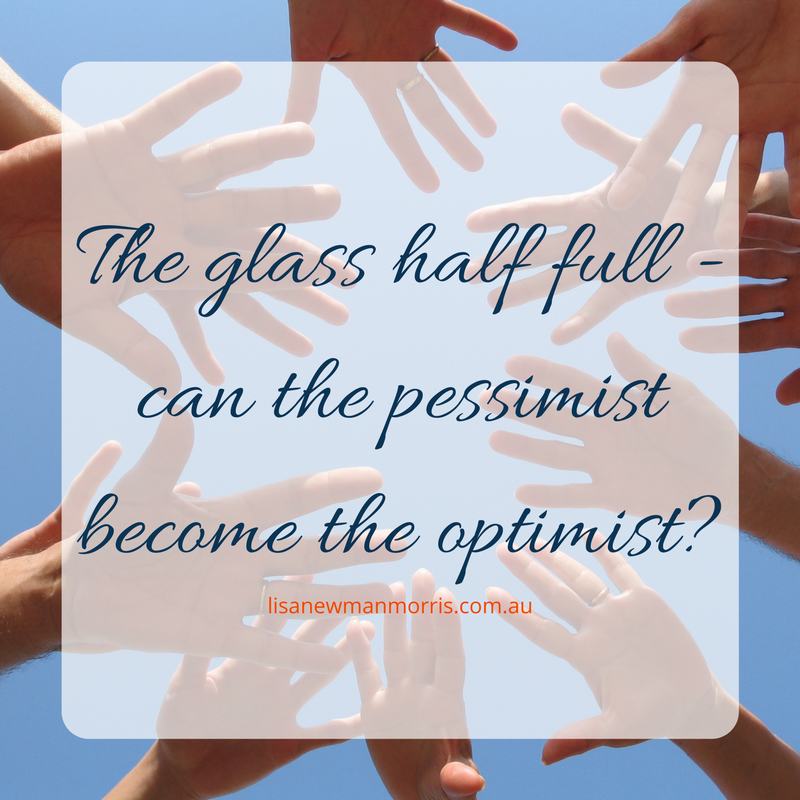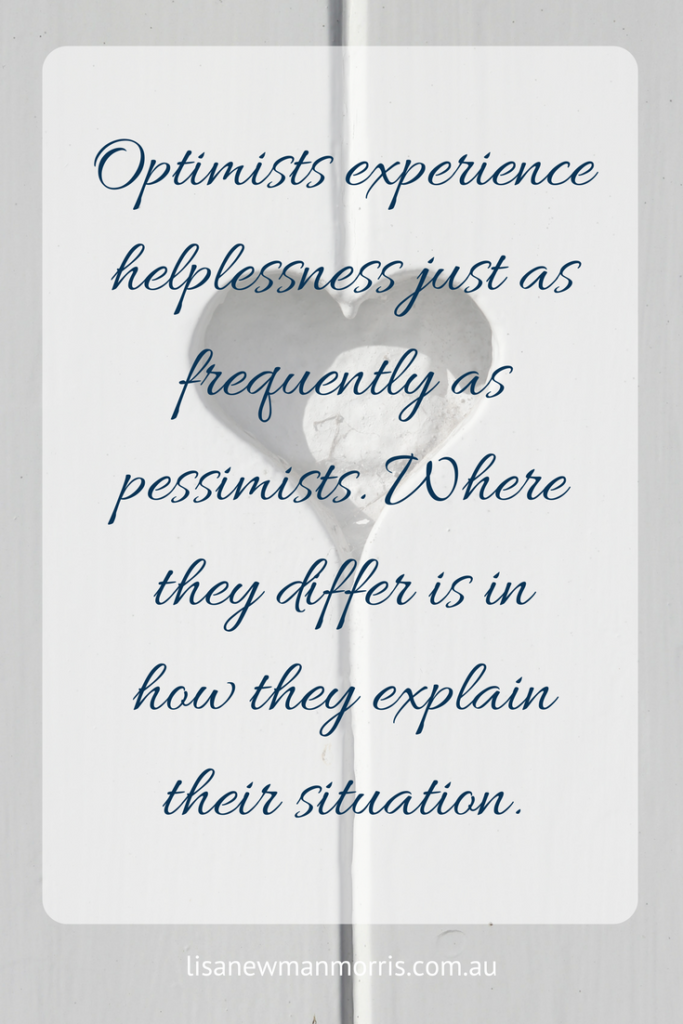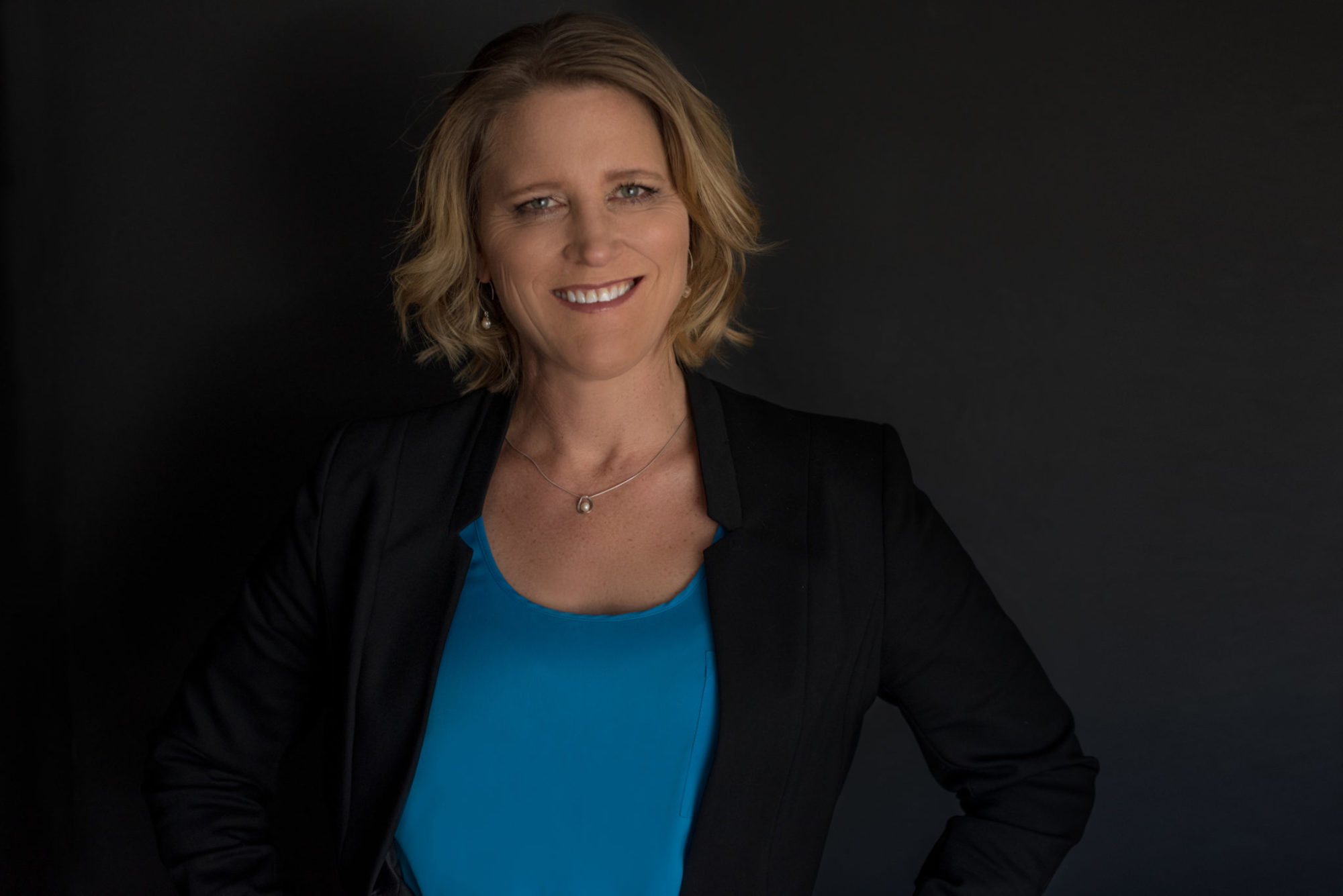Can the pessimist become the optimist?
The optimist and the pessimist. You’re either one or the other, aren’t you? The optimist is upbeat, always seeing the glass half full. The pessimist wallows in self-pity, moaning over their half empty glass. The optimist achieves excellence while the pessimist blames everyone and everything for their failures. Which are you? Can the pessimist become the optimist?
What makes one an optimist while another is a pessimist? What separates the two and can the pessimist become the optimist? Research suggests they can.
In the 1960’s, first year psychology students Martin Seligman and Steve Maier, concluded that they can. The outcome of their study proved it isn’t suffering that leads to hopelessness, it’s suffering that you believe you can’t control.
Can people learn that they are helpless?
It was once thought that neither animals nor people, could have thoughts that influenced their behaviour. It was thought that all living animals respond mechanically to punishments and rewards. How far we’ve come in understanding behaviour!
Think about your own most recent challenging experience. Can you consider your recent difficulties the result of particular mistakes which you could avoid in the future? Are you able to think back to the past, where you have overcome failure and eventually succeeded?
Will tomorrow be better than today?
Much of what you might see in people who are optimists is their ability to ask this question and answer, yes! Resilience is the ability to be able to bounce back from difficulty. It’s being able to draw on past experiences, despite current hardship, take control of the situation and recover quickly.
There is an old Japanese saying; fall seven, rise eight. It’s not what happens to you or how many times it happens to you that matters. The only thing that matters is whether you can get up again and keep fighting. It’s the feeling that you have the ability to change your circumstance.
Fall seven, rise eight (Japanese proverb) Share on X
Since Seligman and Maier’s studies in the 60’s, more recent research has concluded that suffering without control, can reliably produce symptoms of clinical depression, including changes in appetite and physical activity, sleep problems and poor concentration.
Seligman later went on to further train as a clinical psychologist. He went about investigating the flip side of learned helplessness, in other words, what he describes as learned optimism.
Learned optimism
Learned Optimism as described by Seligman, is your ability to stop automatically assuming guilt; how to get out of the habit of seeing the direct possible implications in every setback; how to be optimistic.
Optimists experience challenges just as frequently as pessimists. Share on X
Optimists will always search for temporary causes for their problem. They will habitually find specific issues which they can control and change next time. Pessimists blame their troubles on permanent and pervasive causes for which they believe they have little control.
Here’s a test from the work Martin and his students did to distinguish optimists from pessimists. Imagine you can’t get all the work done that is expected of you in the week. Think about one major root cause for why this occurred.

If you’re a pessimist you might say something such as “I can never keep up to date” or “I don’t have time” or “I’m not cut out for this”. These explanations are permanent and they remove your power for being able to change the situation. These reasons could also influence other situations and not just this one current struggle.
These types of permanent and pervasive explanations for problems, turn minor issues into major catastrophes. They make it easy for you to decide to give up. It seems logical that you have no control over the current challenge and you have no way to influence the outcome.
On the other hand, if you’re an optimist, you’ll find something much more temporary and specific as the cause. “I made an error in my calculations” or “I didn’t stick to my time management schedule”. These types of temporary and specific causes can be corrected. They’re fixable and it’s easier to be motivated to make changes for the future.
The benefits of being optimistic
As a result of this research, Martin found that compared to pessimists, optimists are less likely to suffer from depression and anxiety. Optimists also perform better in other pursuits not directly related to mental health.
Optimistic teenagers remain healthier throughout middle age and ultimately live longer than pessimists. Optimistic students are more likely to earn better marks and are less likely to drop out of school. Optimists are more satisfied with their marriages and are twice as likely to stay in their jobs.
A one year field study of MetLife insurance agents, uncovered optimistic salespeople sold 25% more than their pessimistic counterparts. Other studies of salespeople in a wide range of industries, showed that optimists outsell pessimists by 20-40%!
Think about the opportunities this presents you as a business owner.
Being a pessimist or an optimist is not a personality trait you are stuck with. You can learn to be more optimistic in times of adversity. The research is clear. You can’t avoid challenging times. What’s important is being careful about your self-talk and how you explain the situation. By focusing on more temporary and specific causes for your current struggle, you can learn to take back control. By choosing optimistic thinking, you will find the ability to be more resilient and to seek out workable solutions.



I’m a pessimist but learning how to be an optimist… i think i can
Good stuff Janice! Keep focused on solutions 🙂
Good post, thank you. I tend to be an optimist most of the time, but it’s easy to slip back especially if you don’t feel like doing something! Thanks for the challenge.
Love this post! I was a pessimist before but my peers helped me become optimistic in life 🙂
https://colourfulmishmash.wordpress.com
That’s brilliant to hear you have such wonderful support Vanessa!
I like your definition of learned optimism-gives us hope.
Thankyou Rosalie I really appreciate your support and thankyou for contributing.
Still learning to be an optimist, thank you for a great post!
That’s brilliant to hear you are open to learning Delphine! Good on you 🙂
Great article! I always try to be optimistic. Positivity is way more motivating and productive than negativity.
It absolutely is Michelle, and it’s a choice, wouldn’t you agree?
i am an optimist (most of the times) 🙂
Thanks for this great post!
Glad to hear it Vana! Thanks for your comments, much appreciated.
LOVE this article and this quote: “Optimists experience challenges just as frequently as pessimists.”
It’s all in the way you VIEW it. We can train ourselves to think positively, to believe in the GOOD and we can shift out of negativity. We CAN LEARN optimism. Great read!
So true Dionna! Thanks for your thoughts, very much appreciated.
I have definitely noticed a difference in people when they actively chose to see things more positively.
Absolutely Braden, I agree. It makes a difference to the person and also to those around them.
Love this post!
I am an optimist, however, sometimes when the negativity tries to engulf me, I try and read such posts and this one has added that collection
Thanks for sharing dear 🙂
Thankyou Sushmita, glad it could be of help!
Pessimists look at the problem while optimists look for the solution. Looking for the silver lining is always an option, being happy is a choice. I totally agree with you that motivational self-talk can vastly improve a pessimistic outlook, it’s not a personality trait one is stuck with…very interesting article.
I love that Nandita! Very true thanks so much for your insights 🙂
I had read some of the research on learned helplessness in the past, but never seen it applied to learning optimism before. This is really interesting!
It is really interesting isn’t it Jo! Thanks for reading 🙂
I’m an optimist 🙂 No matter what challenges life tosses my way, I see it as a new adventure 🙂
That’s wonderful! You must be such a positive person to be around 🙂